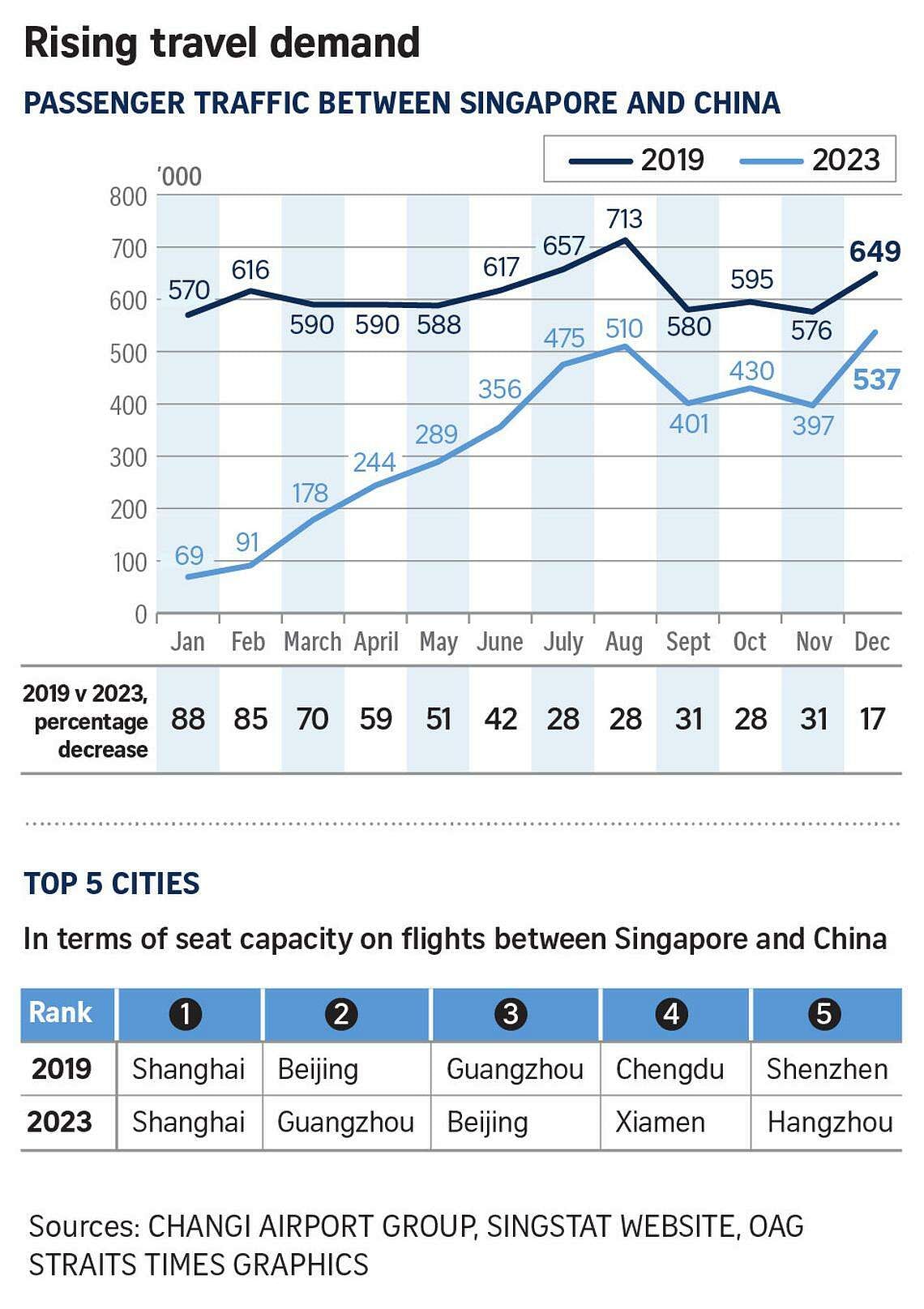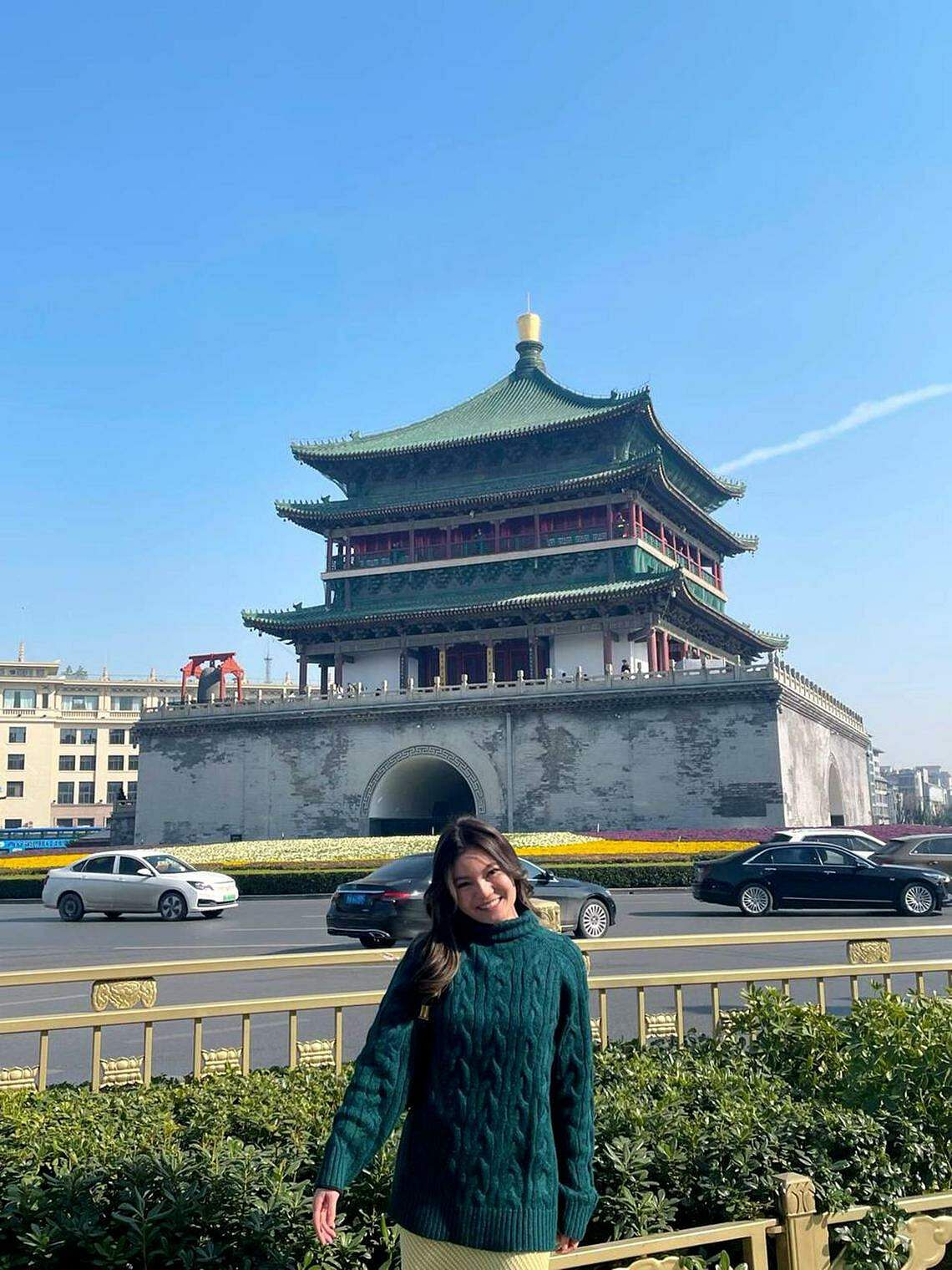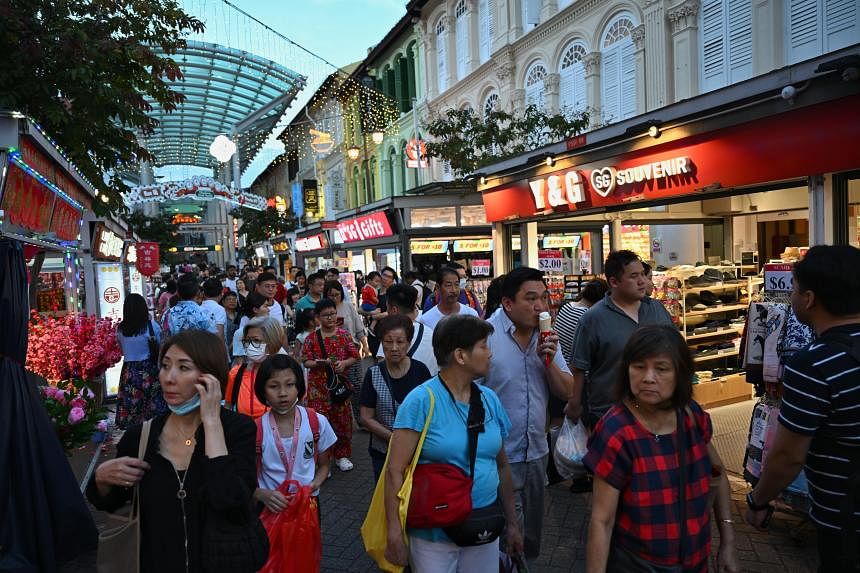SINGAPORE – Tour agencies, travel booking websites and airlines are seeing rising interest in travel between Singapore and China, after it was announced on Jan 25 that both countries will start their mutual 30-day visa-free arrangement on Feb 9.
The agreement will allow citizens of Singapore and China to enter each other’s country without a visa, for a stay of up to 30 days.
This comes just months after China reinstated a 15-day visa-free policy for Singaporeans, following a suspension of more than three years because of the Covid-19 pandemic.
The move in July 2023 had led to a rise in demand for travel packages to China, some travel agencies told The Straits Times. The upcoming mutual visa-free scheme has fuelled further interest, they added.
Mr Sherwin Seow, marketing director at ASA Holidays, noted an increase of more than 200 per cent in China tour sign-ups between April 2023 – when China began accepting foreign tourists – and January 2024.
After the announcement of the mutual visa-free agreement, his agency received 30 per cent more inquiries for trips to China within days.
EU Holidays director Ong Han Jie said his agency has been receiving more inquiries from its Chinese counterparts on tour and transport arrangements in Singapore for travellers from China. Since the Jan 25 announcement, it has received up to three inquiries daily, compared with one every four or five days before that, he added.
Most of its China tours last seven or eight days, and there are no plans to organise trips beyond 15 days, according to Mr Ong.
Mr Jeremiah Wong, senior marketing communications manager at Chan Brothers Travel, said bookings have doubled quarter on quarter since April 2023.
The agency saw a 15 per cent increase in weekly bookings throughout January 2024, he added. Most of its China package tours are shorter than 15 days.
With the new 30-day visa-free arrangement, Mr Wong said the agency may offer more thematic holidays, such as its slow-travel series for older travellers, which span 14 to 21 days.
Nam Ho Travel saw an increase of 50 per cent in the number of Singaporeans joining China tour packages between July and December 2023, compared with the same period in 2019.
The agencies noted that the new visa-free scheme may encourage more Chinese travellers to visit Singapore, more so than the other way around.
Right now, Chinese ordinary passport holders have to apply for a visa to enter Singapore, while Singaporeans can visit China for up to 15 days without a visa.
While tourist arrivals from China have not bounced back to numbers chalked up before the pandemic, the Singapore Tourism Board is bullish about the rebound.
Pre-pandemic, China was Singapore’s top source of tourists, hitting a peak of 3.6 million arrivals in 2019. In 2023, China accounted for 1.4 million visitors.
Airlines such as low-cost carrier Jetstar Asia also told ST they saw greater interest in their routes to and from China after the mutual visa-free scheme was announced.
Jetstar Asia said it may consider increasing flight frequency and exploring new direct routes to help meet customers’ needs.
SIA Group, which includes Singapore Airlines (SIA) and budget carrier Scoot, said it continues to see strong demand for services to and from China, but it was unable to disclose specific figures, citing commercial sensitivities.
Booking sites have also reported a surge in site traffic since the Jan 25 announcement.
A Klook spokesperson said the online travel platform saw a 40 per cent increase in page visits from users in China searching for Singapore activities that day, compared with Jan 24, while page visits from users in Singapore looking for activities in China rose 16 per cent.
Data from the Singapore Department of Statistics website showed that there were nearly four million passengers travelling between Singapore and China in 2023, which was 54.2 per cent of the 7.3 million in 2019.
China was Changi Airport’s second-biggest market by passenger traffic in 2019. In 2023, it came in sixth.
Seat capacity on flights between the two countries has rebounded to 99 per cent of pre-Covid-19 levels, according to figures from aviation data consultancy OAG.
In January 2024, the top five Chinese cities by seat capacity for passengers travelling between China and Singapore are Shanghai, Guangzhou, Beijing, Xiamen and Hangzhou, based on OAG data.

Connectivity, culture and cheaper fares
Singaporeans like research associate Melissa Ng welcomed the 30-day visa-free scheme. The 29-year-old said she would be open to working remotely from Shanghai for an extended period, if her company allows it.
Freelance project manager Tan Shi Hui, 31, visited seven Chinese cities, including Xi’an and Shanghai, in November 2023. Two weeks later, she explored Yunnan province and stayed for a month. She had applied for a visa before China reinstated the 15-day visa-free scheme, and it allowed her to make two trips over six months, each lasting up to 30 days.

Ms Tan said the 30-day visa-free agreement would give travellers more time to explore different cities, let them save on visa application fees, and be more cost-effective on the whole.
Others like financial consultant Ian Jeevan Prasad Arumugam, however, said they would not travel to China for more than 15 days because of the language barrier.

While the 27-year-old thought his trip to Haikou in Hainan province in July 2023 was “eye-opening”, he found it a bit tricky getting around the city as ride-hailing and mobile payment apps require users to understand Chinese.
Chinese investor Karbo Ma said the visa-free agreement would make travelling to Singapore easier.
“Now, I can fly to Singapore whenever I want to, without having to wait for a visa,” said Ms Ma, 27, who intends to come here for travel and work once a month.
But even before the mutual visa-free arrangement starts, more Singaporeans were already looking to China as a leisure travel destination.
This was driven by the increased flight connectivity and greater interest in Chinese culture and attractions.
IT project manager Vincent Oh, 37, flew to Wuxi city in January because it was a convenient landing point for him and his friends to visit nearby sights in Jiangsu province.
Mr Oh spent 10 days going around Jiangsu, of which 1½ days were spent in Wuxi.
The air link between Singapore and Wuxi, which Jetstar Asia reinstated in December 2023, is the first direct service between both cities since Scoot suspended this connection in February 2020.
Consultant Justina Tay, 24, booked her first trip to China in May 2023. She had chanced upon cheap tickets to Nanning city in April 2023 and booked a six-day trip.

Ms Tay, who enjoys Chinese cuisine, later booked another trip to Chongqing municipality in November 2023, as she found Chinese cities modern and budget-friendly.
Mr Wong of Chan Brothers Travel said the agency has seen the number of Singaporean travellers in their 20s and 30s joining its China tours rise by 20 per cent, compared with pre-pandemic.
Teacher Joshua Tan, 25, picked Guangzhou for his post-graduation trip in May 2023. He said he relished the ease of travelling between different Chinese cities.

He also booked a 14-day solo trip in October 2023, after hearing about the 15-day visa-free travel arrangement.
“I was able to travel farther and explore more,” said Mr Tan, who visited Hunan and Sichuan provinces.
Assistant Professor Kiattipoom Kiatkawsin, who specialises in hospitality and tourism management at the Singapore Institute of Technology, said social media platforms such as TikTok could have piqued the interest of young Singaporeans in travel destinations such as China.
“Since China is not among most Singaporeans’ first overseas choices, seasoned travellers might come to the point where they are willing to explore lesser-known destinations after having visited many of the popular places,” he said.
Mr Mayur Patel, head of Asia at OAG, said more Chinese may travel abroad in 2024 to Asian destinations for short stays due to potential bright spots in China’s financial outlook and visa waivers offered by South-east Asian countries such as Thailand and Singapore.
However, when it comes to Singaporeans, 2024 may not be the same as the previous two years due to weakening global economic conditions and the waning of revenge travel. This is especially for Singapore as it was one of the earliest markets to reopen, and pent-up demand is now slowly disappearing, he added.

